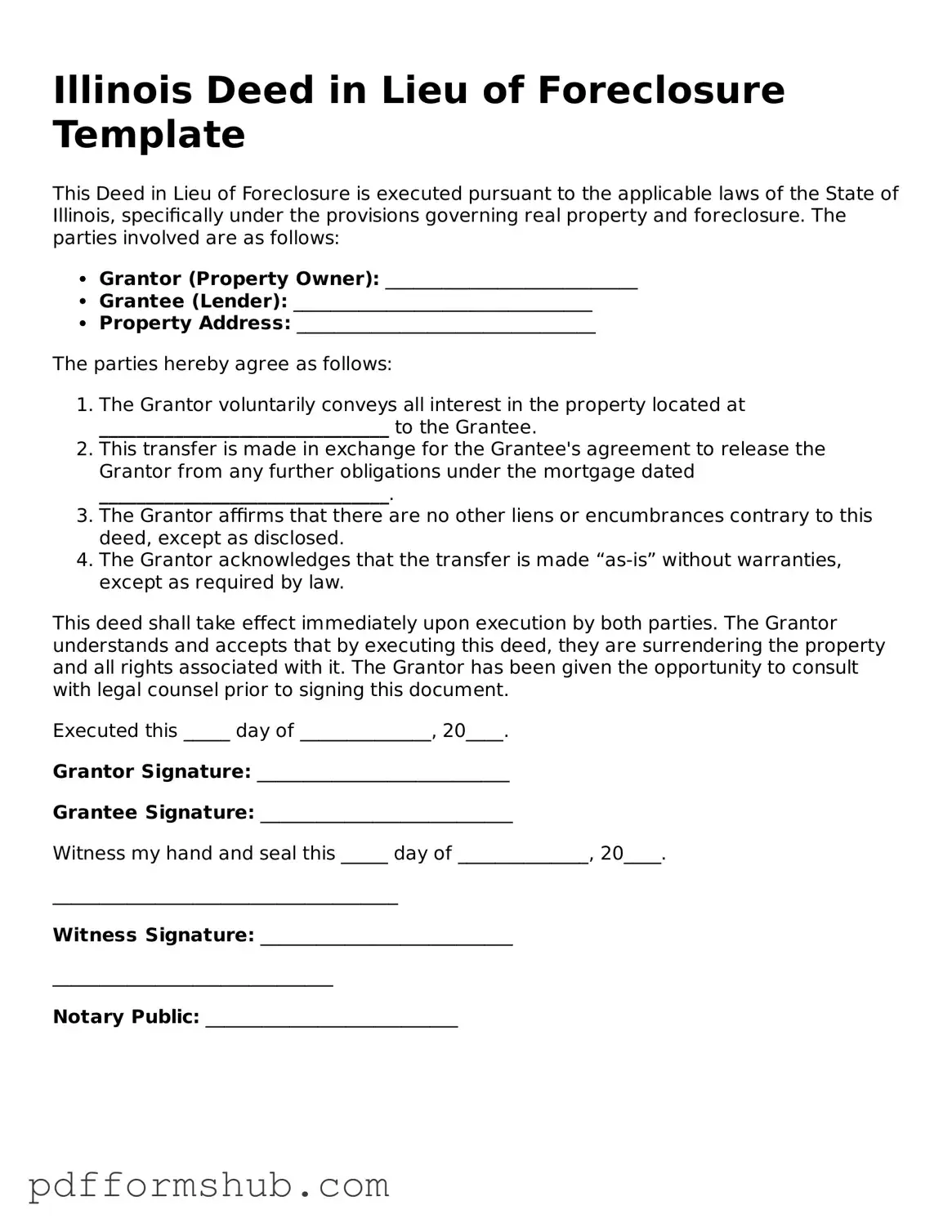Attorney-Verified Deed in Lieu of Foreclosure Form for Illinois State
A Deed in Lieu of Foreclosure is a legal document that allows a homeowner to transfer ownership of their property back to the lender, thereby avoiding the lengthy and often stressful foreclosure process. This option can provide a smoother transition for those facing financial difficulties, as it typically results in less damage to the homeowner's credit score compared to a foreclosure. For those considering this route, filling out the necessary form is a crucial first step; click the button below to get started.
Customize Form
